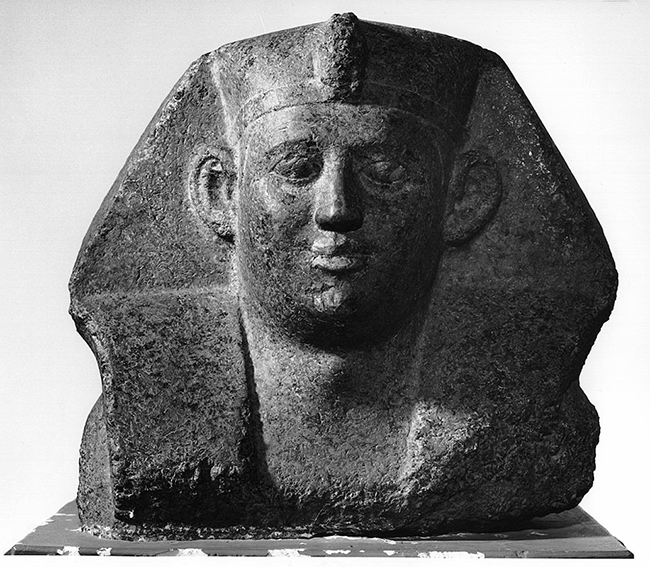Cantor Arts Center
328 Lomita Drive at Museum Way
Stanford, CA 94305-5060
Phone: 650-723-4177

Artist unknown (Egypt), Head of a King (likely Ptolemy VIII), 184-116 BCE. Granite. Stanford Family Collections, 1966.372
This statue’s appearance may have multiple historical layers. The large ears and wide headdress are characteristic of pharaonic statues from the Twelfth and Thirteenth Dynasties (1991–1649 BCE) such as Senusret III and Amenemhat III. But its plump face, jowl, and Mona Lisa smile resemble busts of Ptolemy VIII (184–116 BCE).
In ancient Egypt it was common to reuse statues, and it may be that this one was originally carved during the Middle Kingdom (2055–1650 BCE), and then the face was carved again during the Ptolemaic era. In addition, a close look reveals that the nose is actually made out of wax and a tiny divot in the right eye has been filled with plaster, indicating modern restorations. Although the work is made of very hard granite, someone painstakingly mutilated the nose, stabbed the eyes, and hacked off the lips, perhaps as a political or religious attack.
In the Egyptian imagination, statues were inhabited by the life force of the deceased, and cutting off the nose would effectively kill the statue by halting its breath. Ptolemy VIII was not highly regarded—in antiquity or later. The poet Constantine Cavafy (1863–1933) summed up his legacy when he called him “most obese, slothful Ptolemy,” who is “heavy as stone,” and gorged himself until he “could scarcely keep his eyes open.”